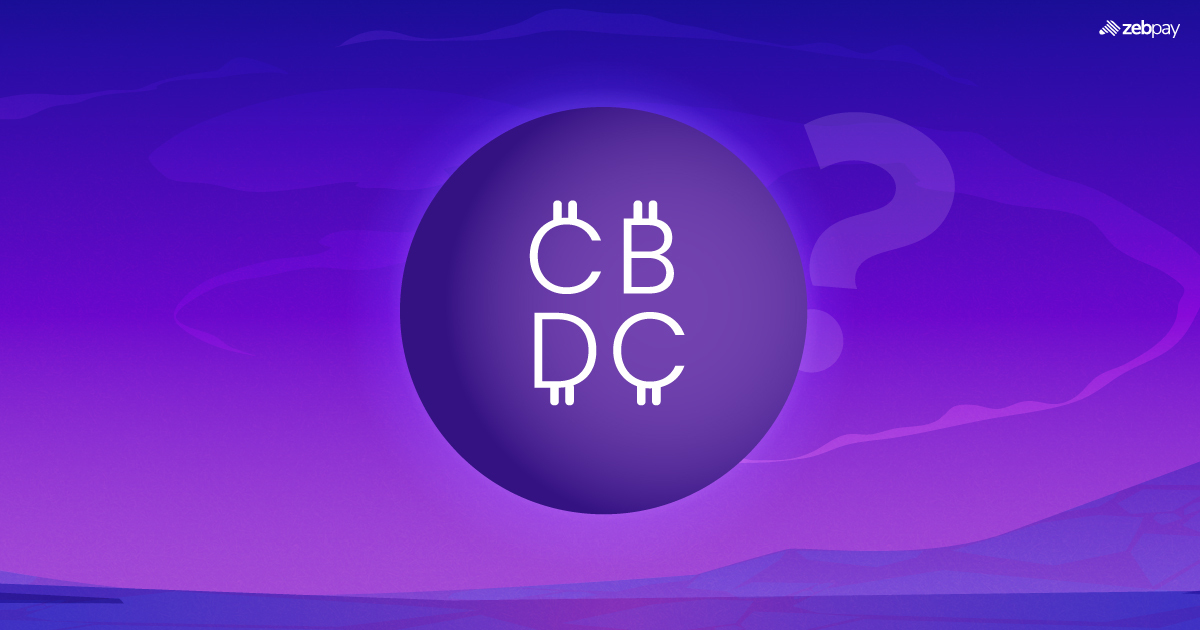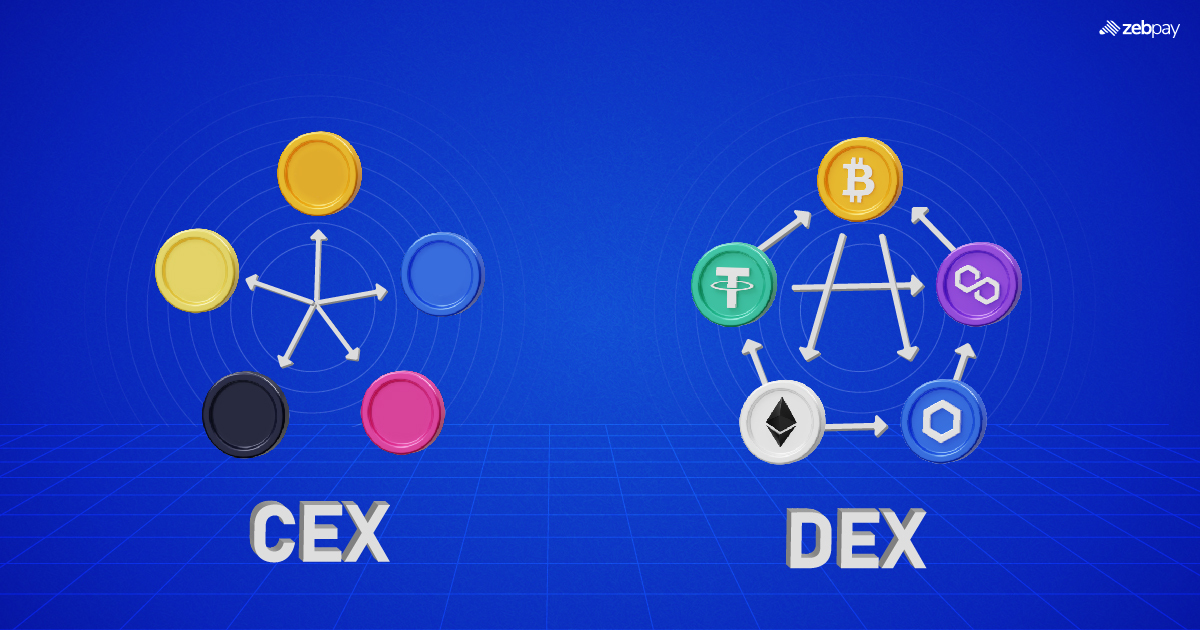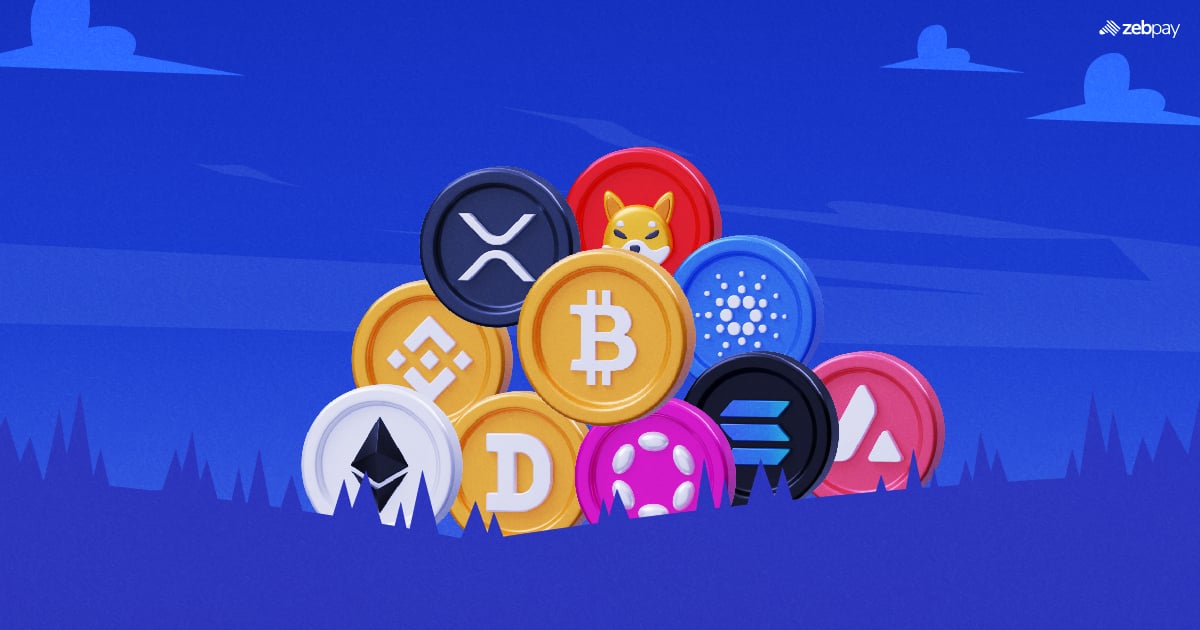When Bitcoin was launched in 2009, it brought about a new form of money. It became a medium with which you could transact across the globe instantaneously. This was a vast improvement over the systems at the time. With the rapid expansion in the blockchain industry, even governments wanted to get involved. The first step towards this goal is Central Bank Digital Currencies.
What is CBDC in Crypto?
To understand a CBDC, we must first know what fiat currencies are. Fiat money is a currency issued by a government, but not backed by any asset like gold or silver. It is the legal tender of the country in which it is issued.
A Central Bank Digital Currency – or CBDC -is a tokenised version of a country’s currency. The government issues the CBDC meaning it is considered legal tender along with paper notes and coins. The country’s central or federal bank typically controls its supply and circulation.
How Does Central Bank Digital Currency Work?
Central Bank Digital Currencies are digital tokens. They are the digital counterpart of the country’s fiat currency. For example, if the Indian Rupee is the fiat currency, the Digital Rupee is the corresponding CBDC. These CBDCs are issued by the central bank of the country, which determines the supply of the token. They also maintain the peg between the token and the currency.
Therefore, CBDCs are simply the country’s currency in a digital form. They are intended to function the same as cash while providing additional benefits to companies, citizens and the government.
Types of CBDC
CBDCs are divided into two main types. However, these are not mutually exclusive, and a digital currency can be both types at once.
Wholesale CBDC
A wholesale digital currency is not intended for use by the general public. Instead, its purpose is to assist banks that maintain deposits with the central bank. This may be used as a substitute for reserves kept with the central bank, or for interbank settlements.
Retail CBDC
Retail CBDCs are used exactly like other legal tenders in the country. Consumers and businesses can use retail digital currencies to transact with each other with ease. It also helps eliminate fraud and counterfeiting as the CBDC cannot be duplicated.
There are two ways retail CBDCs can be implemented:
- Account-Based: The government uses digital identification to manage access to your account. This system is secure but requires personal information to be disclosed. It cannot be used anonymously.
- Token-Based: These use the same system as decentralised crypto tokens, with access being locked behind public and private keys. The system relies on users remembering or safely storing their private keys, but it can be used anonymously.
Benefits of Central Bank Digital Currency
Deter Crime
One of the main advantages of a CBDC is the deterrence of crime. Since all transactions are stored digitally, central authorities can easily trace them back to their source. This makes it difficult for the tokens to be used in criminal activities.
Policy Implementation
CBDCs also make it easier to implement government and policy functions. This includes monetary policy, tax collection and direct deposits to individuals. The system reduces the work required to fulfil these functions by enabling automation.
No Intermediaries
Finally, CBDCs remove the need for middlemen. The government and the Central Bank can connect with individuals directly. There is no need to involve intermediaries like banks and other institutions. This also reduces the risk of a financial crisis as bank failure will have a lower impact on transactions.
What Are The Pros And Cons Of CBDC
| Pros | Cons |
| Payment systems are more efficient through distributed ledger technology | Adoption is dependent on the digital literacy of the population. This is harder in developing or underdeveloped countries |
| Tracking the flow of money is easier for central authorities | The central bank has complete control over the system, with no user governance |
| Elimination of middlemen can make payments cheaper and simpler | Adoption is dependent on digital literacy of the population. This is harder in developing or underdeveloped countries |
| No possibility of counterfeiting since digital tokens cannot be duplicated | Reduces commercial bank activity and may impact the economy in the short run |
Challenges and Considerations for CBDCs
Regulatory Challenges
The Regulatory architecture which needs to be put in place for the functioning of CBDCs must take into account privacy concerns. While it is easy for the government to track transactions in the case of CBDCs, it exposes users to the monitoring of a centralised authority.
The financial transactions which come under the purview of CBDCs are highly sensitive and governments need to carefully frame a robust regulatory framework.
Technological Challenges
The enormous amount of data which needs to be managed by the Central Bank is a technological challenge. In the case of decentralised blockchains, the data is distributed amongst all the nodes which enables easy data management. To tackle this problem, the systems must be robust and functional under enormous transaction load.
Hence, the technology which enables CBDC adoption must be scalable and must have very little latency.
Economic and Monetary Policy Implication
The positive side of CBDCs is their effect on the large-scale distribution of funds without any intermediary. CBDCs reduce transaction costs, enable instantaneous settlements and ensure easier transmission of monetary policy initiatives. It will be easier to deploy funds to rural areas which do not have adequate banking infrastructure. This allows governments to have a far-reaching positive impact.
What Are Some CBDC Examples?
Governments across the world have made strides in adopting CBDCs. Some countries that have already launched their tokens include the Bahamas, India, Nigeria, Antigua and Grenada. However, many more countries have initiatives underway.
The Reserve Bank of India has launched its Wholesale and Retail CBDCs pilot recently. This is meant to be a gradual process that ensures no disruption to the banking and financial system. The RBI will follow through with the proof of concept and various pilot stages before launching it to the public.
Read more: RBI Launches Retail Digital Rupee
Another country that intends to launch its digital currency in 2022 is China. The e-CNY or Digital Yuan is meant to be used for retail payments in China. Several pilot projects have already been conducted in 2021 by the People’s Bank of China.
Finally, Russia is also working on their Digital Ruble. Currently undergoing trials, Digital Ruble has been a long time in the making. While Russia has had a confusing relationship with the crypto industry, they have always had a competitive edge in the field. Their CBDC expands on it while also allowing the government to have more control over the ecosystem.
How To Invest in Central Bank Digital Currency?
It is currently not possible to invest in CBDCs. This is because the token is pegged to the underlying currency and thus matches its price exactly. Acquiring CBDC tokens is the same as getting banknotes of the currency, from an investment perspective. Thus, there is no profitable avenue for investments in CBDCs.
Final Thoughts
Central Bank Digital Currencies have very different benefits as compared to crypto tokens. They are fast and secure, but they also may not be anonymous or allow for high decentralisation. Most importantly, CBDCs are not an investment tool. However, they present an interesting future for how money functions worldwide, enabling easier business and more seamless transactions. Going cashless with the digital economies of the future is sure to bring about better opportunities and innovation in countries.
FAQs on CBDC
How does a Central Bank Digital Currency impact the traditional banking sector?
The impact of Central Bank Digital Currency on the traditional banking sector is still uncertain. It could potentially change the way people use and store money, leading to shifts in banking practices. However, central banks will likely work with traditional banks to ensure a smooth transition and maintain financial stability.
Is CBDC a Crypto Token?
No, CBDC (Central Bank Digital Currency) is not necessarily a crypto token. It is a digital form of money issued and regulated by a country’s central bank. However, it may be based on non-cryptographic means.
Is CBDC based on blockchain?
Not necessarily. CBDC can be based on different technologies, including blockchain or other centralized systems. It depends on how each central bank decides to implement it.
Is CBDC decentralized?
No, CBDC is not decentralized. Unlike cryptos like Bitcoin, CBDC is controlled and regulated by a central authority, which is usually a country’s central bank.
How does Central Bank Digital Currency differ from decentralized crypto?
Central Bank Digital Currency (CBDC) is different from decentralized cryptos because CBDC is regulated by a central authority, while decentralized crypto operates independently without a central authority.
Who is in favour of CBDC?
Many central banks and governments around the world are in favour of CBDC. They believe it can provide more efficient and secure payment systems and promote financial inclusion.
How many countries have launched CBDC?
As of now, several countries have launched or are actively exploring the implementation of CBDC. The countries that have launched their CBDCs include India, Bahamas, Saint Kitts and Nevis, Saint Lucia, Antigua and Grenada.
Is CBDC a fiat currency?
Yes, CBDC is a type of fiat currency. Fiat currency is any form of money that a government declares as legal tender, and CBDC falls under this category.
What is the current status of CBDC implementation?
The current status of CBDC implementation varies from country to country. Some countries have already launched pilot projects, while others are still in the research and development phase. Overall, more than 80 countries are considering CBDC implementation.
What are the challenges and considerations of CBDC?
Implementing CBDC involves several challenges and considerations, such as ensuring security and privacy, addressing technological limitations, managing monetary policy, and ensuring financial stability.
Can individuals hold Central Bank Digital Currency in physical form, or is it entirely digital?
CBDC is primarily a digital currency, but it may be possible for central banks to allow individuals to hold CBDC in physical forms, such as through special cards or devices. However, the exact details would depend on each country’s implementation.
How does a Central Bank Digital Currency impact financial innovation and the development of new financial services?
CBDC has the potential to impact financial innovation and the development of new financial services positively. It can enable faster and more secure transactions, facilitate financial inclusion, and promote the development of innovative payment solutions.
What are the key considerations for a country when deciding to introduce a Central Bank Digital Currency?
When deciding to introduce a Central Bank Digital Currency, countries need to consider factors such as technological readiness, legal and regulatory frameworks, cybersecurity measures, monetary policy implications, and public acceptance.
How does a Central Bank Digital Currency impact the traditional banking sector?
The impact of Central Bank Digital Currency on the traditional banking sector is still uncertain. It could potentially change the way people use and store money, leading to shifts in banking practices. However, central banks will likely work with traditional banks to ensure a smooth transition and maintain financial stability.







